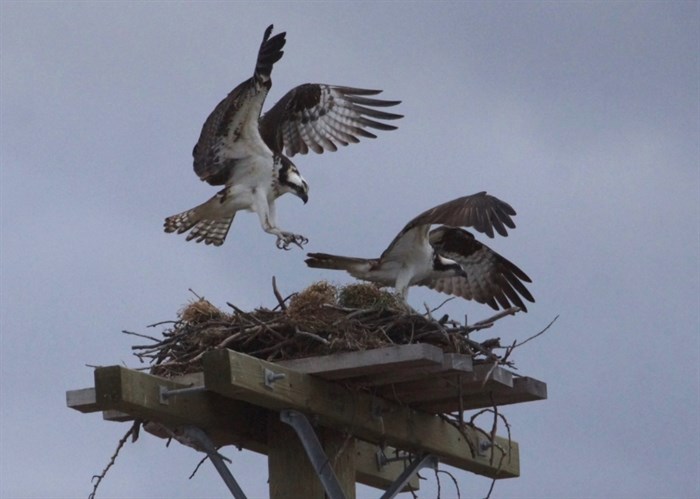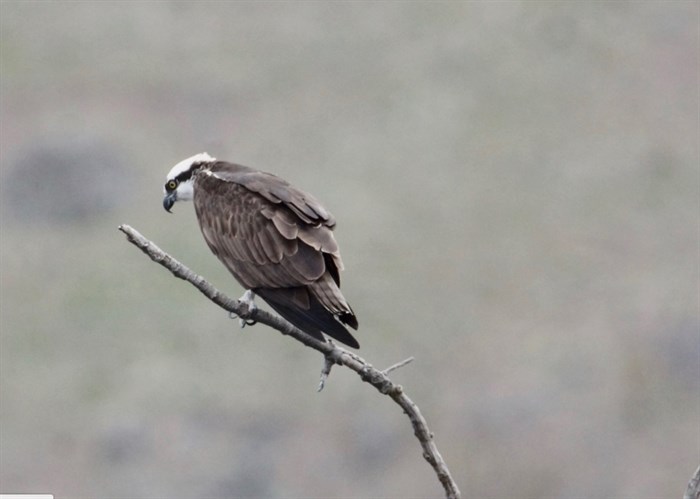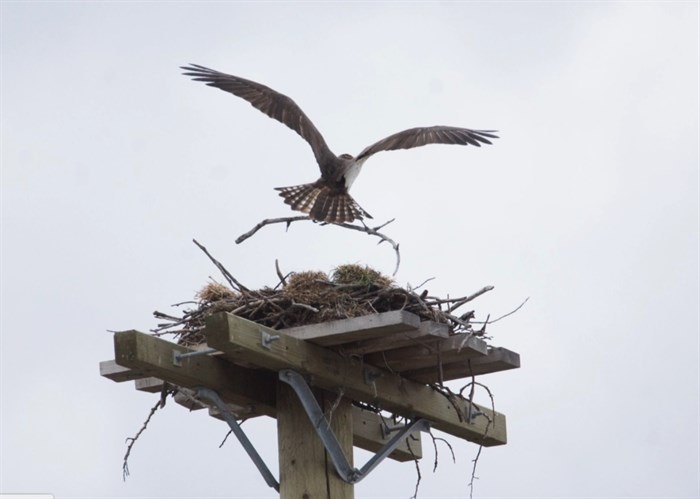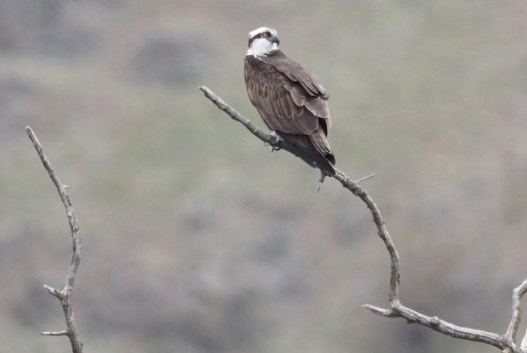
Ospreys nesting on Commonage Road, Vernon, are seen in this Friday, April 17, 2020, submitted photo.
Image Credit: SUBMITTED / Tom Skinner
April 24, 2020 - 11:16 AM
Unrestricted by the travel constraints placed on the rest of us, the Okanagan's population of ospreys has returned for another summer of lakeside living.
Often perched on the top of poles put up by B.C. Hydro to prevent them from nesting next to live wires, the nests are common along lakeside roads throughout the Okanagan.
Owner of bird watching tour company Avocet Tours, Chris Charlesworth, says the southern Interior has some of the healthiest osprey populations in North American. In the 1950s and 1960s ospreys, along with many other birds, were in a perilous situation due to the use of DDT and certain pesticides. Since DDT was banned the osprey population has rebounded, Charlesworth said.

An osprey is seen on Commonage Road, Vernon, Friday, April 17, 2020, in this submitted photo.
Image Credit: SUBMITTED / Tom Skinner
After wintering in the Gulf of Mexico and the Caribbean ospreys, who have a wingspan roughly 1.5 metres in length, head back to the Interior late March. The same pair will head back to the same nest.
"The males come back a little bit before the females and set up the territory," Charlesworth said. "Get it all ready for when the female comes back."

An osprey is seen bringing a twig to a nest on Commonage Road, Vernon, in this Friday, April 17, 2020, submitted photo.
Image Credit: SUBMITTED / Tom Skinner
The nests are never far from water as the birds eat a diet purely of fish, and the females will lay two to three eggs late April or early May.
Charlesworth said ospreys have long talons allowing them to wrap around fish when they dive into the lake. Ospreys in the Okanagan will catch carp and catfish which can be up to a foot in length.
After a summer spent in the Interior and with the chicks now grown-up, the birds head south for warmer weather late September.

An osprey is seen on Commonage Road, Vernon, in this Friday, April 17, 2020, submitted photo.
Image Credit: SUBMITTED / Tom Skinner
To contact a reporter for this story, email Ben Bulmer or call (250) 309-5230 or email the editor. You can also submit photos, videos or news tips to the newsroom and be entered to win a monthly prize draw.
We welcome your comments and opinions on our stories but play nice. We won't censor or delete comments unless they contain off-topic statements or links, unnecessary vulgarity, false facts, spam or obviously fake profiles. If you have any concerns about what you see in comments, email the editor in the link above.
News from © iNFOnews, 2020